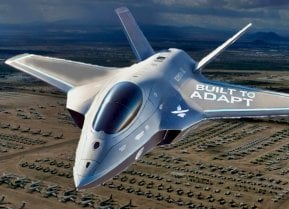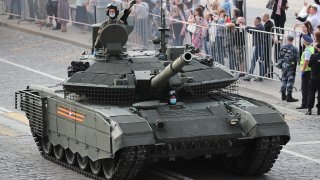Russia's New Military Strategy: Exhaust Ukraine
In August, Ukraine took a bold step by invading Russia's Kursk Oblast, catching Moscow off guard. Ukrainian forces have made significant gains, threatening key areas, including a major nuclear power plant.
Summary and Jey Points: In August, Ukraine took a bold step by invading Russia's Kursk Oblast, catching Moscow off guard. Ukrainian forces have made significant gains, threatening key areas, including a major nuclear power plant.
-Despite these advances, Ukraine faces challenges such as high attrition rates and a shortage of munitions, particularly in artillery, air defense, and long-range strike capabilities.
-U.S. military aid, resumed after a prolonged freeze, is arriving gradually, but Ukraine struggles to match Russia's overwhelming artillery firepower.
Pentagon Assesses Ukraine’s Kursk Offensive: Operational Gains, But Attrition Woes Continue
The invasion of Kursk is seen as a strategic move to draw Russian forces away from other fronts, giving Ukraine the operational initiative in the region. However, the conflict remains a battle of attrition, with Russia maintaining sufficient reserves to hold captured Ukrainian territory but unable to advance further.
In August, the Ukrainian military seized the initiative and invaded Russia’s Kursk Oblast. Moscow was caught off guard, thinking it was the only side that could invade other countries. In more than two weeks of fighting, Ukrainian forces have made significant gains, capturing several settlements and even threatening a major nuclear power plant.
Military Aid, Artillery, and Operational Initiative in the Ukraine War
Despite its advance into Russia, the Ukrainian military faces important challenges, including attrition and lack of munitions.
The Pentagon’s Inspector General's Office published a series of assessments on the course of the war by the Defense Intelligence Agency.
“The UAF continued to suffer heavy attrition rates and lack sufficient capabilities and munitions—particularly artillery, air defense, and long-range strike capabilities—to overcome Russia’s air and ground advantages,” the DIA assessed.
A fierce domestic political debate in Congress froze security aid to Ukraine for over a year. In April, Congress passed a bill approving military assistance to Kyiv worth over $60 billion. Kyiv won’t receive this sum all at once. Rather, it will get periodic packages of security aid according to its needs. Weapons systems and munitions didn’t begin to arrive in Ukraine until early June.
And yet the Russian forces continue to enjoy fire superiority. Despite resumed military aid from the U.S. and a steady influx of weapons and munitions from other countries, the Ukrainian military can’t match the Russian forces’ daily rate of approximately 10,000 rounds of artillery fire. As we have discussed here at The National Interest, artillery remains the king of the battle. As many as 90% of casualties on both sides have been caused by artillery fire. As such, gaining artillery superiority is key to winning the war.
The DIA assessed that “Ukraine probably remains capable of continuing defensive operations but not conducting large-scale counteroffensives for at least the next 6 months, according to the DIA.”
Clearly, the Pentagon doesn’t consider the invasion of Kursk Oblast to be a large-scale operation. And indeed the Ukrainians don’t consider it as such. According to Ukrainian defense officials, the main goal of the foray into Russia is to draw Russian units from other parts of the contact line, thus lessening the pressure on Ukrainian defenders, but also creating the conditions for future Ukrainian counteroffensives.
By invading Kursk Oblast, the Ukrainian military seized the operational initiative in that part of the contact line and is now dictating the course of the battle.
According to the DIA, the Russian military retains sufficient reserves to maintain the buffer zone it has created by capturing large swaths of Ukrainian territory, but not enough forces to advance deeper into Ukraine.
“Russia is deliberately exploiting its quantitative advantage to exhaust Ukraine. Russia’s current pace of offensives is designed to seize additional Ukrainian territory, especially in Donetsk, albeit at high personnel and equipment costs,” the DIA assessed.
About the Author:
Stavros Atlamazoglou is a seasoned defense journalist specializing in special operations and a Hellenic Army veteran (national service with the 575th Marine Battalion and Army HQ). He holds a BA from the Johns Hopkins University and an MA from the Johns Hopkins’ School of Advanced International Studies (SAIS). His work has been featured in Business Insider, Sandboxx, and SOFREP.
Image Credit: Creative Commons and/or Shutterstock.


